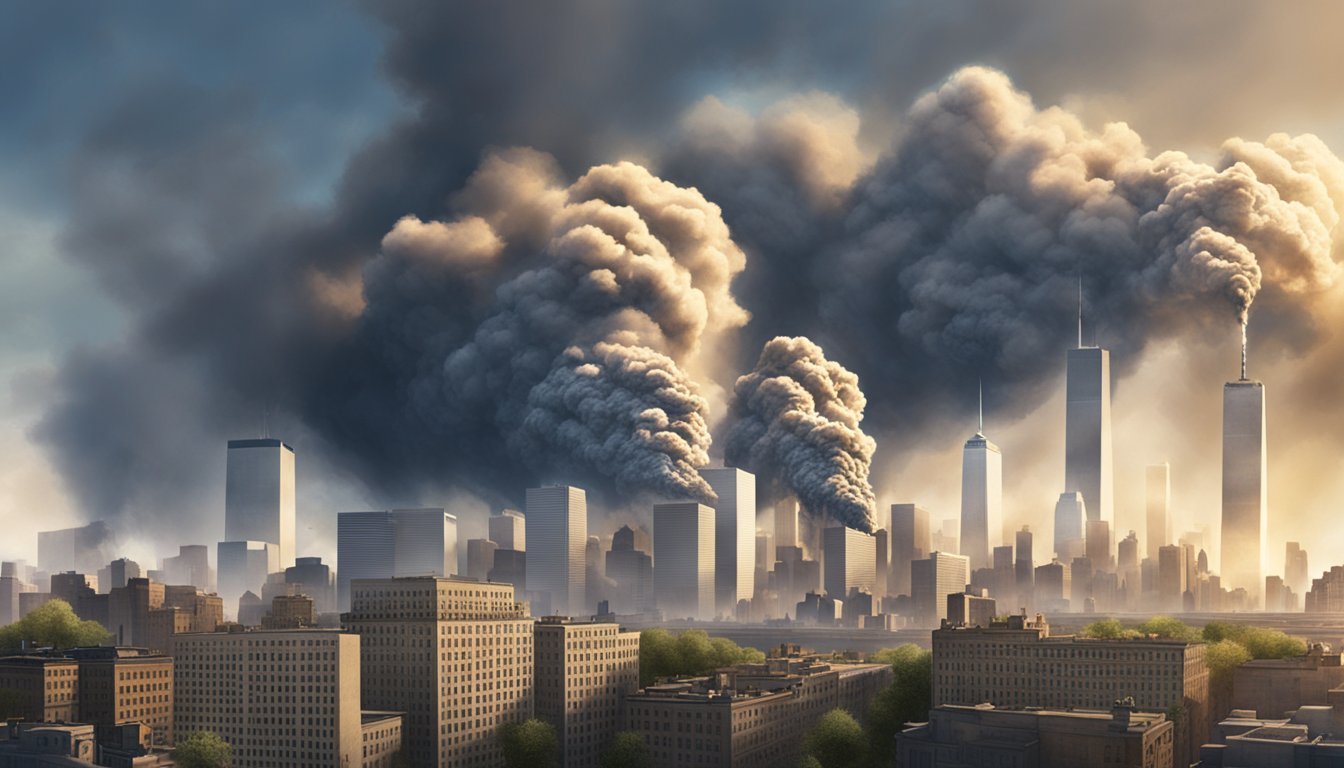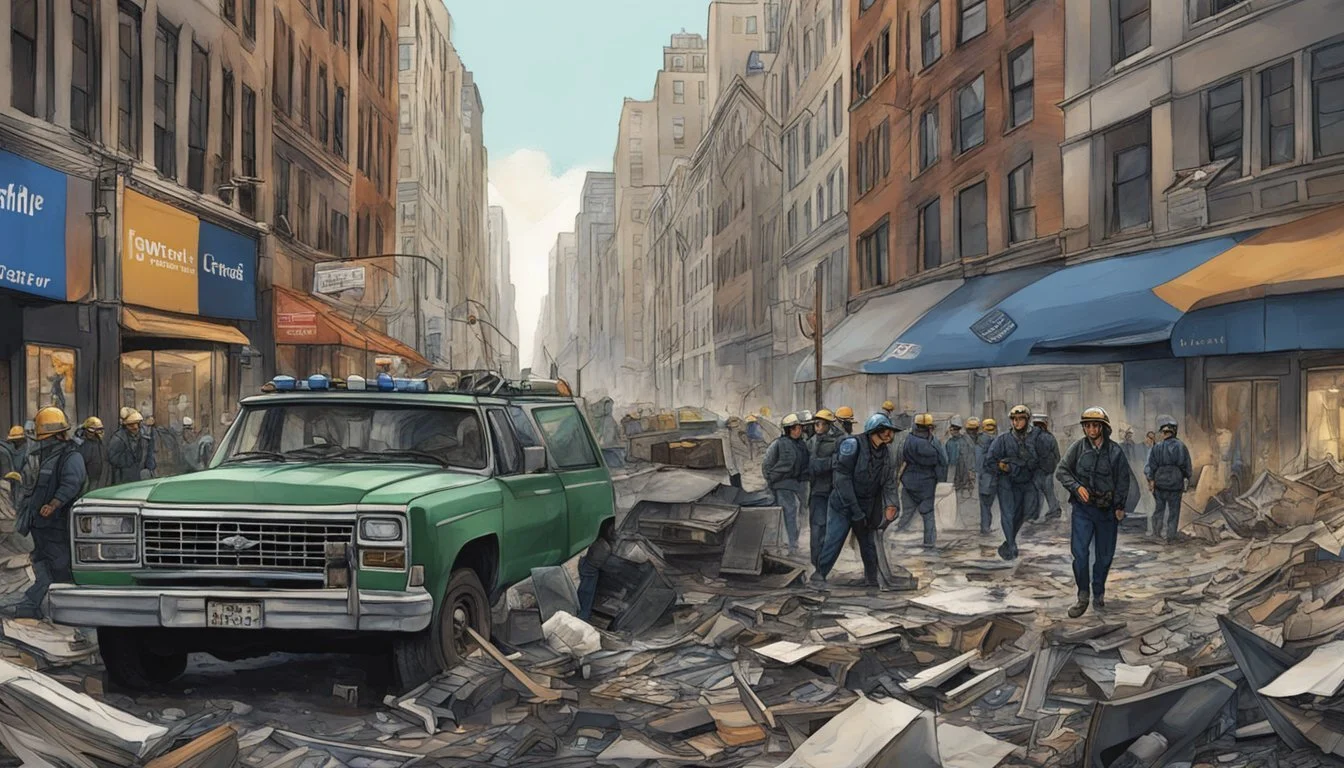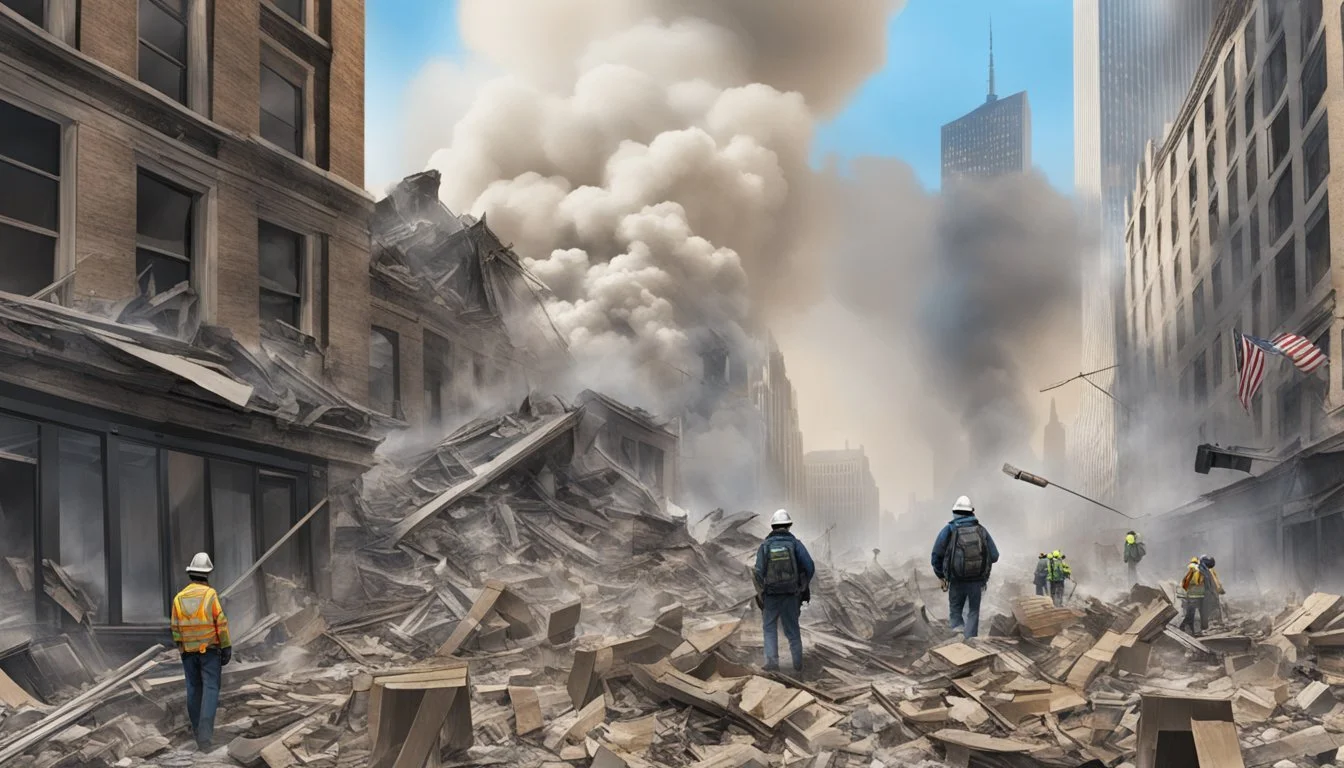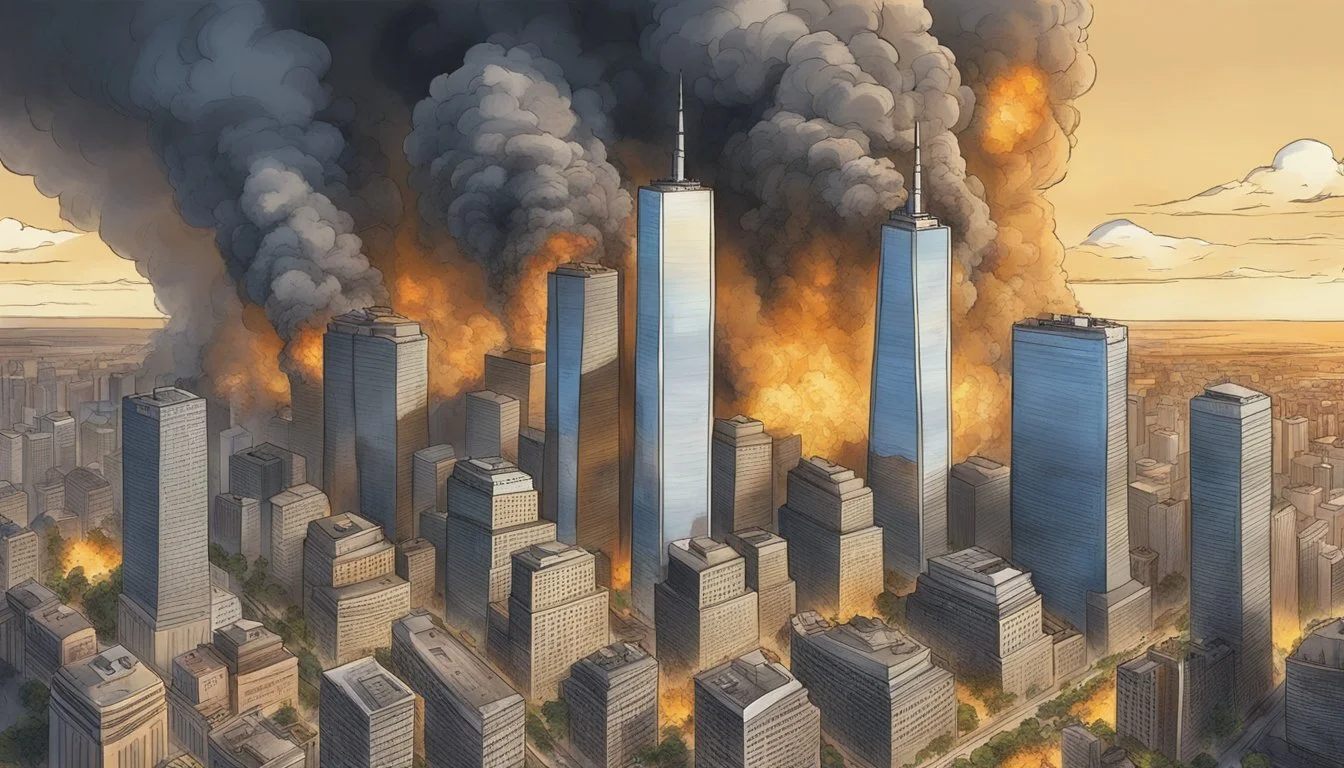French Brothers' 9/11 Film: Unseen Footage Reveals Shocking Truth of That Day
The Naudet brothers' 9/11 documentary provides an unprecedented insider's view of the September 11 attacks in New York City. Jules and Gédéon Naudet, French-American filmmakers, were in Lower Manhattan that fateful day, initially working on a project about a rookie firefighter. Their cameras captured some of the most iconic and haunting footage of the events as they unfolded.
The Naudet brothers' film offers a unique perspective on 9/11, including the clearest recorded images of the first plane striking the World Trade Center. Their documentary follows the experiences of New York City firefighters from Engine 7, Ladder 1 firehouse as they responded to the attacks. The filmmakers' proximity to the events allowed them to document the chaos, heroism, and tragedy of that day with remarkable intimacy.
The documentary gained significant attention for its raw and unfiltered portrayal of the attacks and their immediate aftermath. It provides viewers with a visceral sense of the confusion, fear, and courage displayed by first responders and civilians alike. The Naudet brothers' work stands as a powerful historical record and a testament to the human spirit in the face of unimaginable crisis.
Background on the Naudet Brothers
Jules and Gédéon Naudet are French-American filmmakers who gained recognition for their groundbreaking 9/11 documentary. Their journey from aspiring directors to capturing one of the most significant events in modern history shaped their careers and impacted documentary filmmaking.
Jules and Gédéon Naudet's Early Careers
The Naudet brothers were born in France and moved to the United States in 1989. They became naturalized U.S. citizens in 1999. Jules and Gédéon developed a passion for filmmaking at a young age and pursued careers in the industry.
In their early years, the brothers worked on various film projects, honing their skills as directors and cinematographers. They focused on documentary-style storytelling, aiming to capture real-life events and human experiences.
Path to 9/11 Documentary Filmmaking
In 2001, Jules and Gédéon Naudet began working on a documentary about a rookie New York City firefighter. This project led them to spend time at the Engine 7, Ladder 1 firehouse in Lower Manhattan.
On September 11, 2001, while filming their firefighter documentary, the brothers found themselves at the epicenter of a world-changing event. Jules Naudet captured some of the clearest footage of the first plane hitting the World Trade Center.
The Naudet brothers' presence at Ground Zero allowed them to document the immediate response of firefighters and the unfolding tragedy. Their unique perspective and raw footage became the foundation for their critically acclaimed 9/11 documentary.
Genesis of the Documentary
The documentary "9/11" by French brothers Jules and Gédéon Naudet emerged from an unexpected convergence of events. Their initial project transformed into a historic record of the September 11 attacks on the World Trade Center.
Concept and Development
Jules and Gédéon Naudet set out to film a documentary about a rookie firefighter in New York City. They chose to follow Tony Benetatos at the Engine 7, Ladder 1 firehouse in Lower Manhattan. The brothers began filming in early 2001, capturing the daily routines and training of firefighters.
Their goal was to document a probationary firefighter's first fire. This original concept laid the groundwork for what would become a much more significant project.
Filming Amidst the Tragedy
On September 11, 2001, Jules Naudet accompanied firefighters to what seemed like a routine gas leak. He captured the only clear footage of the first plane striking the North Tower of the World Trade Center.
The brothers found themselves in the midst of a historic tragedy. They continued filming throughout the day, documenting the firefighters' response and the unfolding events.
Jules entered the North Tower with firefighters, recording their efforts inside the building. Gédéon stayed at the firehouse, filming the reactions and subsequent deployment of additional firefighters.
Their footage became an invaluable record of the attacks and the heroic actions of first responders.
Content of the Documentary
The Naudet brothers' 9/11 documentary provides an unprecedented look into the events of September 11, 2001. It captures intimate moments inside a New York City firehouse and harrowing footage from Ground Zero.
Inside the Firehouse
The film begins by following probationary firefighter Tony Benetatos at the Engine 7, Ladder 1 firehouse in Lower Manhattan. Viewers get a glimpse into the daily routines and camaraderie of FDNY firefighters.
The cameras capture mundane tasks like equipment checks and meal preparations. These scenes establish a stark contrast to the chaos that unfolds later.
James Hanlon, a firefighter himself, provides narration that gives context to firehouse traditions and protocols. His insider perspective adds depth to the portrayal of firefighter life.
The Twin Towers on September 11, 2001
On the morning of September 11, Jules Naudet accompanies firefighters on a routine call. His camera inadvertently captures the only clear footage of the first plane striking the North Tower.
The documentary shows the initial confusion and disbelief among first responders. It then follows FDNY units as they mobilize and head toward the World Trade Center.
Gédéon Naudet, filming at the firehouse, records the reactions of firefighters watching the events unfold on television. His footage conveys the shock and determination felt by those preparing to respond.
First Responders' Actions
The film provides an unparalleled view of first responders entering the Twin Towers. Jules Naudet's camera follows firefighters into the North Tower lobby, capturing their efforts to establish a command post.
Viewers witness the firefighters' bravery as they ascend the stairs, carrying heavy equipment. The documentary shows their attempts to rescue civilians and maintain order amidst the chaos.
The collapse of the South Tower is recorded from inside the North Tower. This shocking moment emphasizes the danger faced by first responders and the sudden shift in their mission from rescue to survival.
Survivors' Testimonies
Interviews with survivors offer personal accounts of the tragedy. Firefighters describe their experiences inside the towers and the split-second decisions they had to make.
Civilians share stories of their escapes and the assistance they received from first responders. These testimonies provide emotional depth to the visual record of events.
The documentary includes follow-up interviews conducted months after 9/11. These reflections offer insights into the long-term impact of the attacks on survivors and first responders alike.
Public and Critical Reception
The documentary "9/11" by Jules and Gédéon Naudet received widespread attention and acclaim. It captured the events of September 11, 2001 in New York City with unprecedented footage and intimate perspectives.
Initial Viewing Impact
CBS aired "9/11" on March 10, 2002, drawing over 39 million viewers. The documentary provided a raw, first-hand account of the attacks, including rare footage of American Airlines Flight 11 striking the North Tower. Many viewers found the film deeply moving and informative.
The Naudet brothers' unplanned proximity to the events lent the documentary a unique power. Their footage from inside the World Trade Center during the attacks was particularly impactful. Some critics praised the film's restraint in depicting graphic violence while still conveying the day's horror and heroism.
Awards and Recognitions
"9/11" received numerous accolades for its groundbreaking content and storytelling. The documentary won a Peabody Award in 2002 for its comprehensive and sensitive portrayal of the attacks. The Peabody board cited the film's "extraordinary on-the-scene record of the World Trade Center attack."
The film also earned two Emmy Awards in 2002 for Outstanding Sound Mixing and Outstanding Picture Editing. Critics lauded the Naudet brothers and James Hanlon for their skilled editing of the chaotic footage into a coherent narrative. The documentary's impact extended beyond awards, becoming a valuable historical record of 9/11.
Cinematic Techniques and Narration
The Naudet brothers employed masterful visual storytelling and narrative structure to create a powerful documentary of the 9/11 attacks. Their techniques captured the raw emotions and chaos of that fateful day.
Visual Storytelling
Jules and Gedeon Naudet utilized handheld cameras to create an intimate, immersive feel. Their unsteady shots conveyed the confusion and fear permeating New York City. Close-ups of firefighters' faces revealed a range of emotions - from determination to shock and grief.
The filmmakers juxtaposed serene scenes of everyday life with sudden chaos as the attacks unfolded. This stark contrast heightened the impact of the events. Long shots of the burning towers provided scale, while intimate footage inside firehouses captured personal moments.
Narrative Structure
The documentary follows a chronological structure, beginning with mundane firehouse routines on the morning of September 11th. This linear approach builds tension as viewers know what's coming.
The Naudet brothers weave multiple perspectives together, cutting between Jules' footage at the World Trade Center and Gedeon's at the firehouse. This technique provides a comprehensive view of events while maintaining narrative flow.
Voice-over narration from firefighters adds context and emotional depth. Their reflections, recorded after the attacks, create a layered narrative that bridges past and present. This structure allows viewers to process the unfolding tragedy alongside those who lived it.
Impact and Legacy
The documentary "9/11" by Jules and Gédéon Naudet left an indelible mark on both filmmaking and historical documentation. Their unique footage provided an intimate view of the September 11 attacks in Lower Manhattan.
Influence on Documentary Filmmaking
The Naudet brothers' work revolutionized documentary filmmaking. Their unprecedented access to first responders during the 9/11 attacks set a new standard for immersive storytelling. The film's raw, unscripted nature captured the chaos and heroism of that day in real-time.
Their technique of embedding with subjects for extended periods became more widely adopted. This approach allowed for deeper, more authentic portrayals in subsequent documentaries. The brothers' ability to maintain composure while filming in extreme conditions also inspired a generation of filmmakers.
Contribution to Historical Documentation
The Naudet brothers' footage serves as a crucial historical record of the September 11 attacks. Their film captured the only clear images of the first plane striking the World Trade Center. This footage became invaluable for understanding the timeline of events.
The documentary preserves the experiences of first responders at Ground Zero. It offers future generations a visceral account of the day's events. The National Museum of American History houses parts of their work, recognizing its significance.
Their documentation of the FDNY's response provides insights into emergency procedures during large-scale crises. This has informed training and protocols for disaster response teams worldwide.




